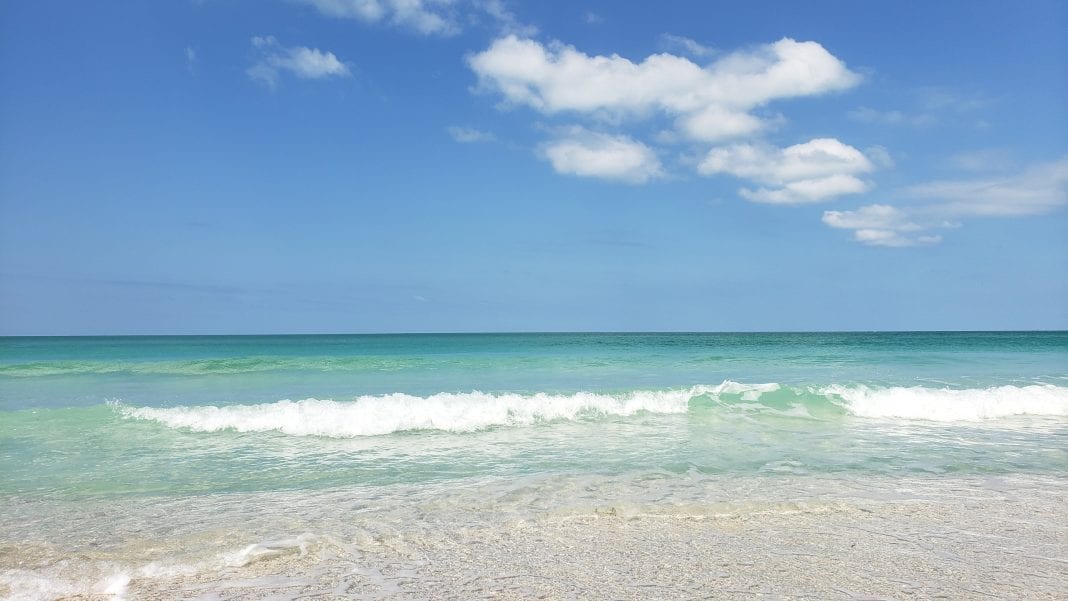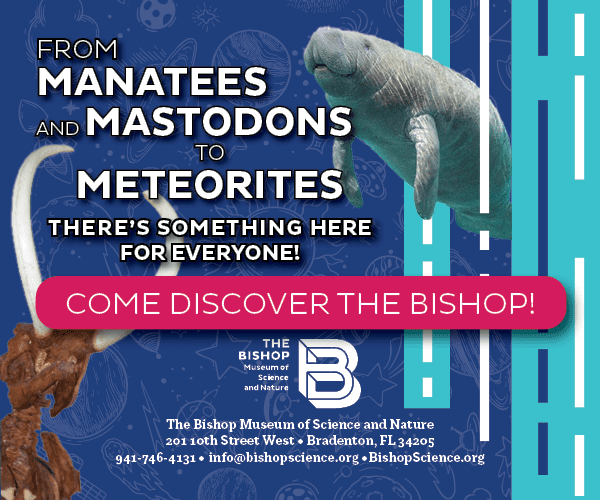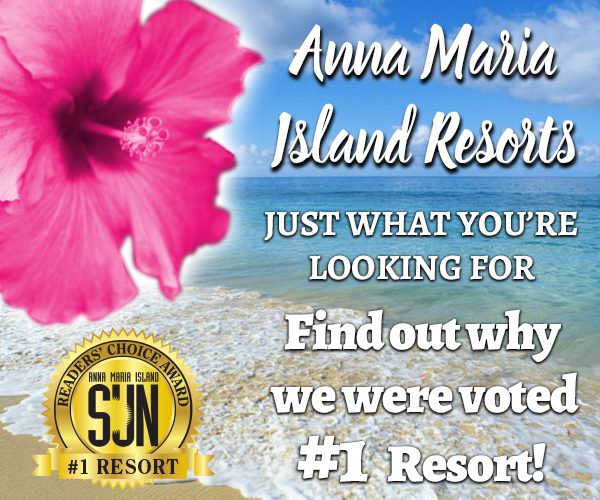Updated Friday, May 17, 2019 – ANNA MARIA ISLAND – Red tide and blue-green algae persist in local waters, according to today’s reports from state and federal environmental agencies.
Very low concentrations of red tide documented on May 13 are predicted to remain at least until Monday, May 20, according to today’s report from the University of South Florida/Florida Fish and Wildlife Conservation Commission Collaboration for the Prediction of Red Tides.
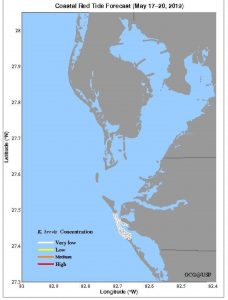
No fish kills or respiratory irritation were reported in today’s Florida Fish and Wildlife Conservation Commission (FWC) report.
Report algae blooms to DEP at 855-305-3903 or online.
Report fish kills to FWC at 800-636-0511.
Red tide was found in water samples at the Coquina Beach South boat ramp on May 13 in very low concentrations, according to the FWC.
The report was the first sign of red tide since February, when a bloom disappeared that originated in October 2017 in Southwest Florida, appearing in Island waters in August 2018.
Background concentrations of the algae that causes Florida red tide, Karenia brevis, have no discernable effects on people or marine life. However, in very low concentrations and above, red tide cells emit a neurotoxin when they bloom that can cause shellfish closures and respiratory irritation in people, especially those with asthma, COPD or emphysema. In low concentrations and above, red tide can be deadly to marine life.
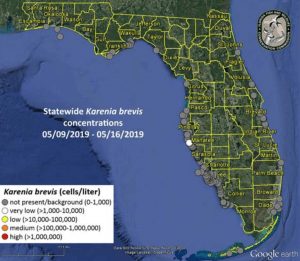
Scientists say that salinity, currents, temperature and light play a part in the formation of red tide blooms, as do nutrients from Florida’s natural phosphate and limestone deposits, Caribbean seawater brought to Florida’s west coast on the Loop Current, the Mississippi River, Saharan dust blown across the Atlantic Ocean to Florida’s waters, and fertilizer and animal waste runoff.
Blue-green algae tests negative for toxins
Blue-green algae also remains present in local waters but has tested negative for toxins, according to the Florida Department of Environmental Protection (DEP).
Blue-green algae was detected in water samples in Anna Maria Island canals, Holmes Beach bayside and Palma Sola Bay on May 9. Tests released on Thursday, May 16 show that in all three locations, the “filamentous cyanobacteria (Lyngbya-like)” growths are not toxic.
The algae is not the same blue-green algae species that plagued Lake Okeechobee for several months last year, microcystis aeruginosa, according to DEP.
However, non-toxic blooms can harm the environment by depleting oxygen levels in the water column and reducing the amount of light that reaches submerged plants, according to DEP.
Some blue-green algae can produce toxins that can make people and pets sick if swallowed, and can cause skin and eye irritation if contacted, according to DEP, which advises beachgoers and their pets to stay out of the water if algae is visible as specks or mats, or if the water is discolored pea-green, blue-green or brownish-red.
Toxins also can be inhaled. If people or animals splash or if boats create wakes in water bodies with blue-green algae, the cyanotoxins in the algae can release into the air. The toxins mix with water droplets and spray, making them easily inhaled by people and animals, according to the Florida Department of Health (DOH).
For some people, blue-green algae can cause rashes, stomach cramps, nausea, diarrhea and vomiting. People who are very sensitive to smells can experience respiratory irritation. Sometimes, high exposures of toxin can affect the liver and nervous system, according to DOH.
The World Health Organization considers toxin levels under 10 micrograms per liter to represent a low-level risk for adverse health outcomes from short-term recreational exposure; however, they advise that certain sensitive populations, including children, the elderly and immunocompromised individuals may still be at risk even at low concentrations and should avoid any exposure.
Filamentous cyanobacteria (blue-green algae) are found worldwide and are a natural part of freshwater, brackish, and marine environments in Florida, according to Mara Gambineri, director of communications at DEP.
The growth of blue-green algae typically increases in the spring and summer months when water temperatures and daylight hours increase, she said.
Filamentous cyanobacteria are photosynthetic organisms, like plants, meaning they can convert sunlight into energy. To do so, they need nutrients like carbon, nitrogen and phosphorus from their environment. Higher levels of these nutrients in the water and sediment can lead to higher levels of filamentous cyanobacteria growth, according to DEP.
For this and other reasons, Florida law bans the use of phosphorus and nitrogen fertilizers during the rainy season, June 1 through Sept. 30.
Other factors that contribute to blooms include warm temperatures, reduced water flow and lack of animals that eat algae, Gambineri said.
Blooms of filamentous cyanobacteria can form brownish floating blobs or mats that begin to decay and emit a foul, rotten egg odor caused by the production of hydrogen sulfide gas and other organic breakdown byproducts, she said.
A different type of growth, Lyngbya majuscule, was detected in water samples from Sarasota Bay at Whitfield Avenue in south Manatee County on May 8; no toxins were found.















